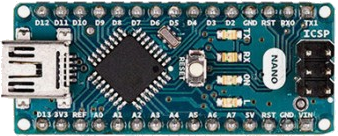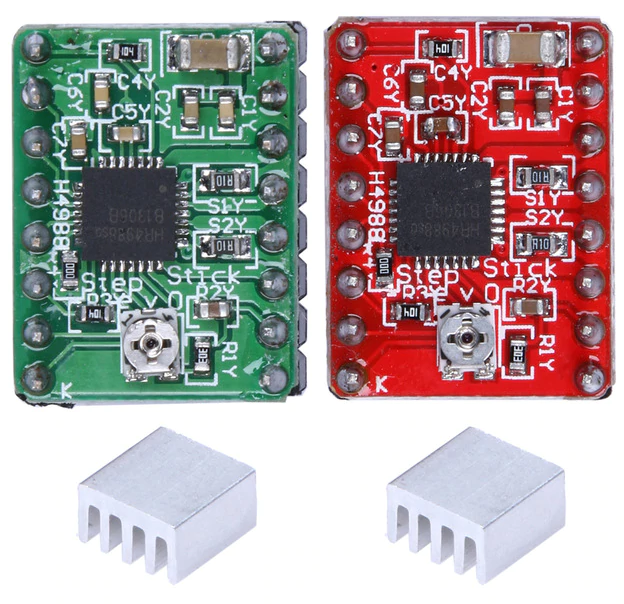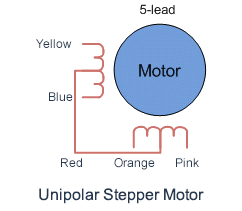Processor
Ardufocus firmware supports the following AVR 8-bit microcontrollers. Currently there are no plans to support additional architectures such as ARM but if you have a specific use case for it open a new feature request and we will discuss it.
| Microcontroller | Flash | SRAM | EEPROM |
|---|---|---|---|
| ATmega168 | 16KB | 1KB | 512B |
| ATmega168P | 16KB | 1KB | 512B |
| ATmega328P | 32KB | 2KB | 1KB |
| ATmega328PB | 32KB | 2KB | 1KB |
| ATmega32U4 | 32KB | 2.5KB | 1KB |
Ardufocus uses as the brain for the operations the Arduino development board but the Arduino framework aka IDE is not a build dependency for this project. Ardufocus is written in AVR C++.
The following boards have been tested and are fully supported:
| Board Name | Microcontroller | Clock | Logic |
|---|---|---|---|
| Arduino UNO | ATmega328P | 16 MHz | 5V |
| Arduino Nano 2.0 | ATmega168 | 16 MHz | 5V |
| Arduino Nano 3.0 | ATmega328P | 16 MHz | 5V |
| Arduino Nano 3.0 CN | ATmega328PB | 16 MHz | 5V |
| Arduino Mini | ATmega168P | 16 MHz | 5V |
| Arduino PRO Mini | ATmega328P | 16 MHz | 5V |
| Sparkfun PRO Mini 3.3V | ATmega32U4 | 8 MHz | 3.3V |
The serial support for the Sparkfun PRO Mini board is only avaliable for the internal USART1 broken out on pins TX0 and RX1.
Some Arduino Nano clones coming from China use the ATmega328PB variant, despite being compatible with the standard ATmega328P you may have some trouble getting the Arduino IDE to upload the sketch into them. If this is your case follow this tutorial about properly stetting up the IDE environment for working with those micros.
Memory constrains The usage of a microcontroller with less than 32KB of flash memory is currently barely supported as the firmware will use almost all of the available flash space. For future proof implementations it is strongly recommended to use one of the 32KB based boards.
We recommend the usage of an Arduino Nano 3.x board. This is a compact board, has enough DIO pins to handle two independent focuser motors and has on-board Serial USB connectivity.

The following table represents the translation between IO pins as defined on the Arduino lingo and their numeric equivalent on the Ardufocus configuration files, it also list the pin type and if it defined on the Ardufocus’s Hardware Abstraction Layer (HAL), pins not defined on the HAL are not usable.
| Type | Arduino | PIN | HAL |
|---|---|---|---|
| Digital | D0 | 0 | Yes |
| Digital | D1 | 1 | Yes |
| Digital | D2 | 2 | Yes |
| Digital | D3 | 3 | Yes |
| Digital | D4 | 4 | Yes |
| Digital | D5 | 5 | Yes |
| Digital | D6 | 6 | Yes |
| Digital | D7 | 7 | Yes |
| Digital | D8 | 8 | Yes |
| Digital | D9 | 9 | Yes |
| Digital | D10 | 10 | Yes |
| Digital | D11 | 11 | Yes |
| Digital | D12 | 12 | Yes |
| Digital | D13 | 13 | Yes |
| Analog | A0 | 14 | Yes |
| Analog | A1 | 15 | Yes |
| Analog | A2 | 16 | Yes |
| Analog | A3 | 17 | Yes |
| Analog | A4 | 18 | Yes |
| Analog | A5 | 19 | No |
| Analog | A6 | 20 | No |
| Analog | A7 | 21 | No |
Stepper driver
| Driver | Current | Microsteps | VCC |
|---|---|---|---|
| A4988 | 2A | 16 | 8-35V |
| DRV8825 | 2.5A | 32 | 8-45V |
| ULN2003 | 0.5A | 1 | 5-50V |
ULN2003 Actually the ULN2003 isn't a stepper motor driver but instead a Darlington Transistor Array on a single IC package thus all the pulse-train's timming and any additional microstepping needs to be generated by the microcontroller.
Due to the wide usage of “step sticks” on 3D printers, the price difference between them and simpler ULN2003 are virtually negligible when sourcing from generic manufacturers.

The A4988 or the DRV8825 stepper motor driver have a lot of advantages when compared with the ULN2003 darlington transistor array:
- Microstepping
- Adjustable current limiting
- Over-current and over-temperature protection
- 8-25V @ 1A without requiring a heat sink or forced air flow
Stepper motor
Ardufocus supports two types of stepper motors depending on the selected stepper driver. Bipolar stepper motors are commonly known as NEMA17 and have four leads. Unipolar stepper motors are more uncommon and have five leads, the best known example is the 28BYJ-48.


Step stick drivers such as the A4988 or DRV8825 will drive Bipolar Stepper Motors like most NEMA17 motors. The ULN2003 can drive either motor type but Ardufocus only supports Unipolar Stepper motors when using the ULN2003 driver.
Unipolar stepper motors such as the 28BYJ-48 can be physically converted into a Bipolar type. For more information have a look at the following guide.
The table bellow represents typical values for both stepper motor types, you should always confirm the specs for your specific motor by reading the manufacturer data sheet. Only for reference I provide links for very common models of the NEMA17 and 28BYJ-48 stepper motors.
| Type | I | Angle | Torque | Gear | Steps/Rev |
|---|---|---|---|---|---|
| Bipolar | 0.9A | 0.9 | 0.34N.M | 1:1 | 200 |
| Unipolar | 0.2A | 5.625 | 0.08N.M | 64:1 | 2038 |
Stepper motor voltage If you intend to use an Unipolar motor with the ULN2003 driver please pay special attention to the motor's nominal voltage because this driver does not allow the user to set a current limit. 28BYJ-48 stepper motors are commonly available at 5V and 12V ratings, we recommend the 12V version.
In terms of pricing, NEMA17 motors are much more expensive than the 28BYJ-48. You can buy a NEMA17 in the $15 range while a 28BYJ-48 motor will cost you only $2.
The main advantage of using a NEMA17 is the 5% accuracy range per step and the higher torque which allows heavier payloads. As it is recommended to use backlash compensation on the focusing software, the step accuracy between the two motor types is not that relevant.
Temperature sensor
TODO This section needs further improvement.